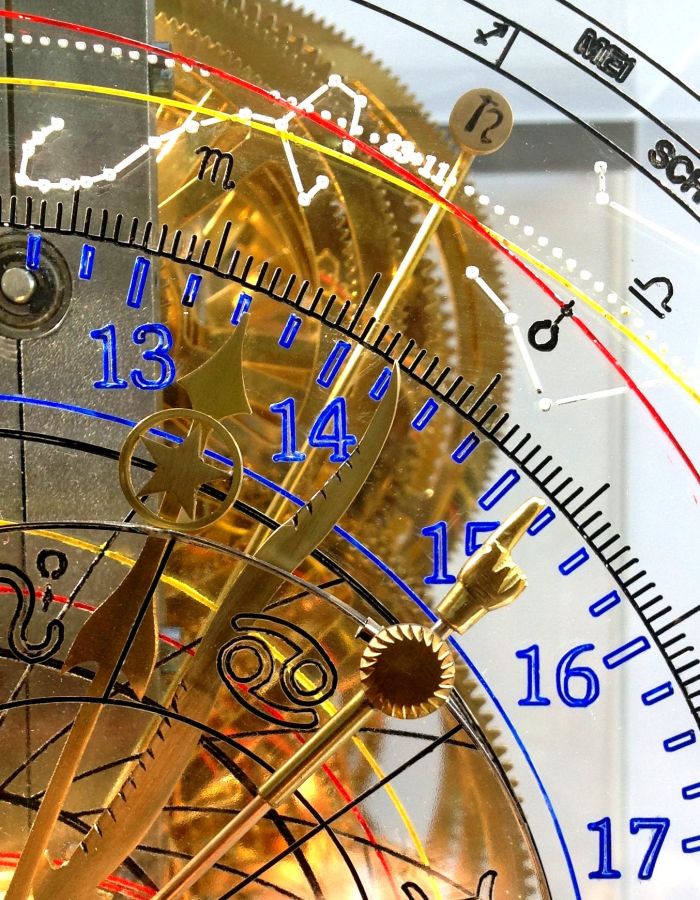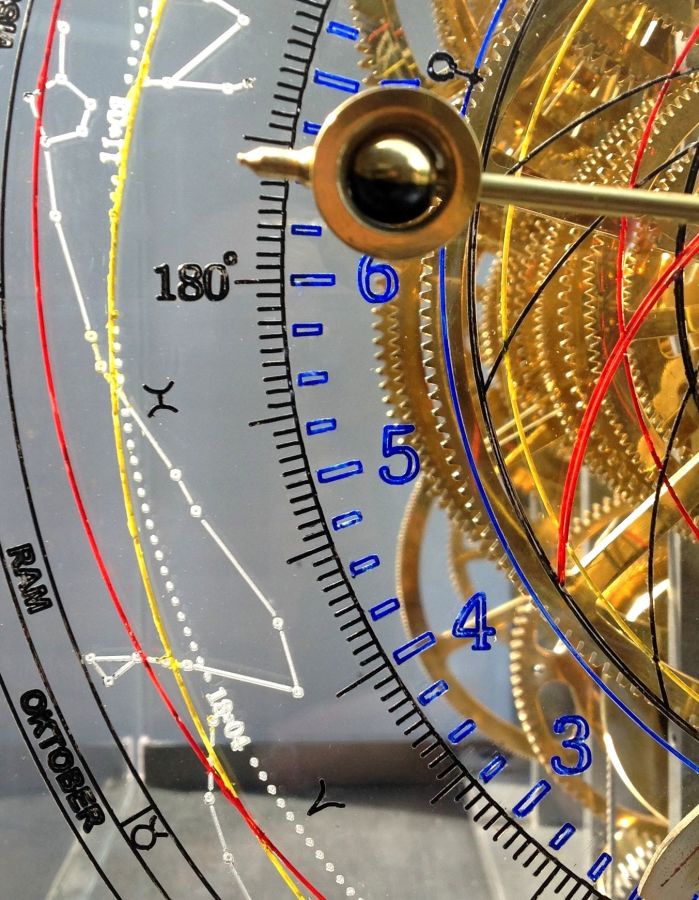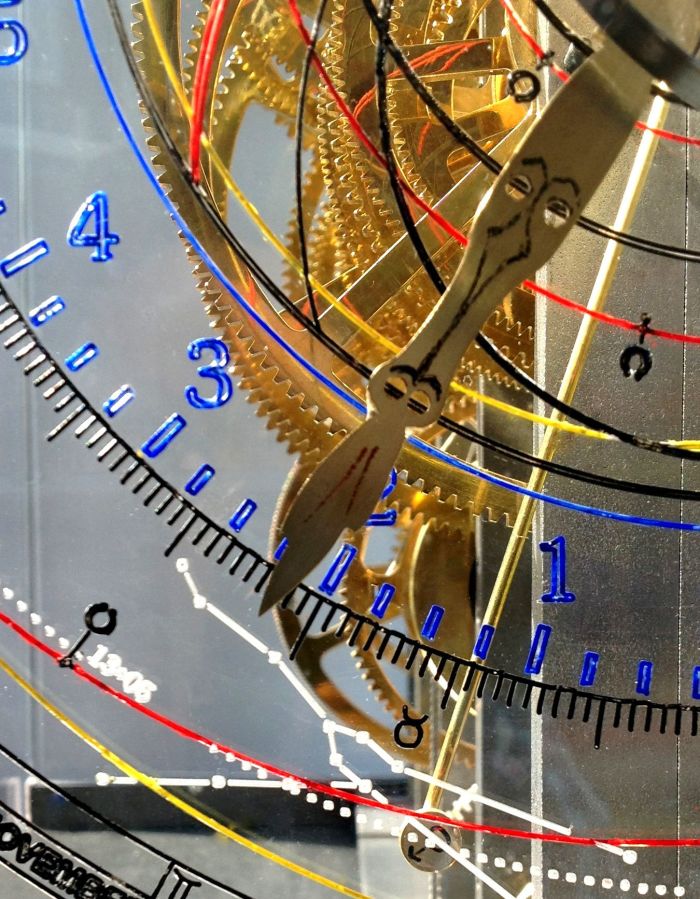



Astronomie is een van de oudste wetenschappen. Een wetenschap die tot op de dag van vandaag steeds weer nieuwe inzichten geeft in het ontstaan van het heelal en wat zich daarin afspeelt. Dagelijks ontdekt men in de verste uithoeken van het heelal nieuwe sterren en planeten. De zon is voor de mens de dichtbijstaande ster. Achtereenvolgens draaien om de zon de twee binnenplaneten Mercurius en Venus, als derde planeet onze Aarde met de Maan, en de buitenplaneten Mars, Jupiter, Saturnus, Uranus, Neptunus.
Video Astronomisch uurwerk: Planetarium en Astrolabium
(6 dagen in 3 minuten)
Door af te wijken van traditionele tandwielposities hebben we een astronomisch uurwerk ontworpen op twee assen en een aandrijfas. Deze astronomisch uurwerken hebben een open design en zijn geplaatst op een verrijdbaar console. De mechaniek van het uurwerk is door die transparante behuizing goed waar te nemen
Toelichting video:
In de video ziet u het astrolabium 6 dagen rechtsom draaien. De zes planeten in het planetarium draaien linksom de zon. In het planetarium staat de zon denkbeeldig in het midden van het uurwerk. De aarde passeert het lentepunt LP op 21 maart (zie bij 0 graden) terwijl de geprojecteerde zon op de ecliptica het 180 graden punt passeert. Omdat de aarde in het lentepunt passeert gaat de zon zowel in het astrolabium als in het planetarium van sterrenbeeld "vissen" over naar sterrenbeeld "ram". Naarmate een planeet verder van de zon staat is de omlooptijd rond de zon langer. De beweging van de twee binnenplaneten Mercurius (326 graden), Venus (341 graden) en de Aarde zijn goed waarneembaar. De omloopbeweging van Mars (214 graden), Jupiter (6 graden) en Saturnus (72 graden) zijn bijna niet waar te nemen omdat de opnametijd van de video vrij kort is. In het astrolabium komt de zon om 05:50 uur op en gaat 18:10 uur onder. De schijngestalte van de maan staat in het laatste kwartier en neemt af richting "nieuwe maan".
